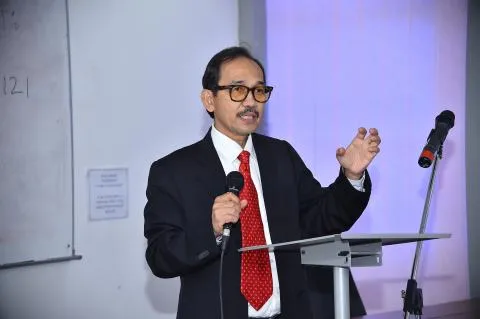
Why is Malaysia taking too long in realising its nuclear dreams?
Its "motivational wave" was once high in 1972.
Rapidly industrialising Malaysia has a long history as a nuclear player but is yet to convert its 45-year relationship flirting with the idea of harnessing nuclear power into a functioning, operational industry.
According to the World Nuclear Association, Malaysia produced 147 TWh gross in 2014, 74 TWh (50%) of this from gas, 56 TWh (38%) from coal, 13 TWh from hydro and 3.5 TWh from oil. Malaysia enjoyed almost 30 GWe installed capacity in 2013, 51.8% of this gas and 25.8% coal. Government policy is geared to reduce reliance on natural gas by building coal-fired capacity, and further coal-fired plants are in the pipeline. However, the role for renewables and nuclear is bound to expand, by necessity if for no other reason.
The long dance
Malaysia first considered the benefits of the peaceful harnessing of nuclear energy nearly a half-century ago. Without context, that measure alone places the nation alongside mature and experienced nuclear states. Yet, no commercial nuclear power plants exist in Malaysia. The motivational wave was once high – in 1972, the forerunner of what is now the Malaysian Nuclear Agency was formed and started operating a research reactor within a decade. Industry development moved slowly for the next two decades, however. Malaysia’s GDP, personal wealth, business sector, and population (now greater than 30 million) all grew rapidly during the 80s and 90s, and with pressure and commitments made to reduce reliance on fossil fuels, alternative fuel sources were considered. Malaysia’s central terrain lends itself to hydro (a significant alternative in the mix to fossil) but this is hardly sufficient to dent the dirty fuel reliance for a nation that aspires like few others to be considered a developed economy.
In 2009, the Malaysian government commissioned a comprehensive energy policy study, formally deciding to consider nuclear power as a genuine contributor to the energy mix. A Nuclear Power Development Steering Committee was established and in May 2010 the Malaysia Energy Minister said that nuclear power was the only viable energy option long-term. Renewables, after all, as important as they are, cannot compete with the potential of nuclear.
A stellar report card
In January 2011, the Malaysia Nuclear Power Corporation was established to control and develop and launch the Peninsula’s first nuclear power plants. 2021 was set for the nation’s first operational NPP, with a second being added a year later. These relatively ambitious but also (at the time) achievable goals were set under guidelines originally established by the IEAE (Nuclear Energy Program Implementing Organisation). Two months later, Fukushima happened and the original timetable was pushed to 2030. The country’s plans to have in place three to four nuclear reactors providing 10 to 15% of Malaysia’s electricity needs by 2030 continue to remain unrealistic.
It is not all doom, gloom and delays however, for proponents of the nuclear industry. At the recent 8th Nuclear Power Asia conference in Kuala Lumpur, Minister in the Prime Minister’s Department, the Honourable Dato’ Sri Hajah Nancy Shukri struck a far more positive tone, stating that her nation is, “Laying a strong foundation for a sustainable national infrastructure to render governmental, legal, regulatory, managerial, technological, human and industrial support for the nuclear programme throughout its life cycle.” Dato’ Nancy continued that the government is completely committed to further exploring nuclear as an alternative energy source and to establishing a “new, comprehensive nuclear law.”
Just one month ago, the very encouraging IEAE report on Malaysia’s basic readiness was impeccably timed the day prior to the opening of Nuclear Power Asia. On 6 March, Minister Dato’ Nancy received the final report of the Integrated Nuclear Infrastructure Review for phase one of three. The INIR, released highly positive indicators, confirming that the Malaysia is “thoroughly prepared and has developed a considerable base of knowledge to make an informed decision about introducing nuclear power.” Dato’ Nancy revealed that the Report makes five recommendations (primarily calling for greater government commitment and enhancing public awareness) and ten suggestions for areas of improvement but also listed the good practices that Malaysia should share with other emerging nations. Recognising public appetite or information and deeper engagement, the Minister added that, “We need to address a deep-rooted stigma and negative perceptions on nuclear energy etched in the hearts and minds of our public.”
A nation poised
Will such positive strides convert to nuclear power being added to the energy mix anytime soon however? While it is accepted that the nuclear industry includes both power and non-power applications, it is nuclear energy that is most necessary in the growing kingdom. The agencies and stakeholders are in place, The Malaysian Nuclear Power Corporation, the MNPC, for instance, is mandated to spearhead the development of the first nuclear power programme, while Malaysian Nuclear Agency, often referred to simply as “Nuclear Malaysia”, and other relevant stakeholders are working together to support the nuclear development programme, with nuclear power added to the energy mix the most prized goal.
Nonetheless, according to Dhana Raj Markandu, Head of Nuclear Power Project Development at MNPC, Malaysia has not yet made a decision on utilising nuclear energy for electricity generation. A generation ago, when oil reserves were discovered in Malaysia, the idea of nuclear power was put on hold and many of the activities revolving around nuclear power was scaled down to the research and development level. Alternative applications of nuclear energy in industry, medical, agriculture and the environment including development of services and commercialisation of the technology were emphasised over power generation.
Today the energy world has changed however, and nuclear is rapidly gaining new focus with a clear framework fundamental to leading the way. Power is back on the agenda, even if the message from various agencies is equivocal and the firm commitment is yet to be made. The IEAE’s March 2017 report must be enormous collateral for proponents. Things are happening, says Dhana, “The MNPC, as the Nuclear Energy Programme Implementing Organisation or NEPIO, is spearheading the effort to facilitate an informed decision on the matter in collaboration with other national stakeholders.”
Leading senior voice in Malaysian nuclear, newly-appointed Director-General of the Malaysian Nuclear Agency, Dr Mohd Ashhar Mohd Khalid, agrees describing a nation poised to take on nuclear power generation. “Nuclear Malaysia is ready to provide technical support in the event that the country is to embark on a nuclear power programme. More than 30 years’ experience in operating and maintaining a nuclear research reactor has given a very good insight towards the technology.”
Written by Simon Hyett

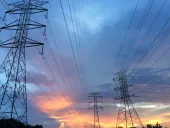

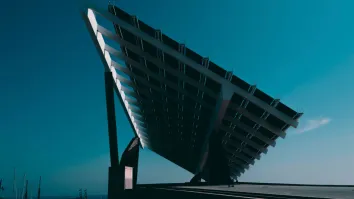
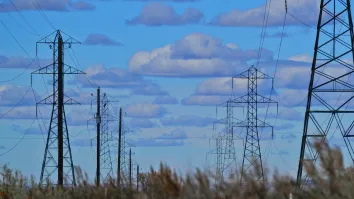
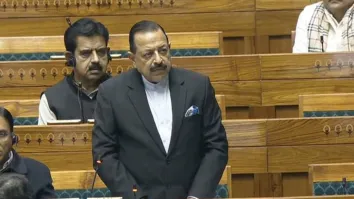













 Advertise
Advertise






